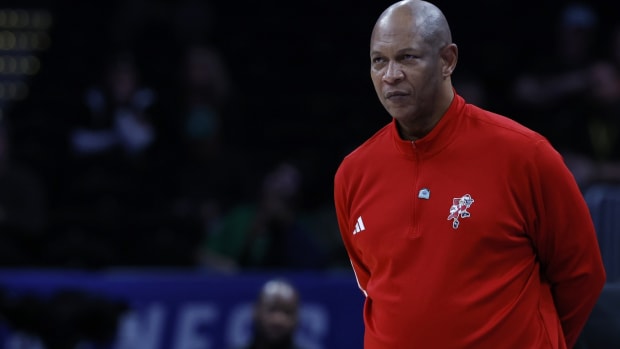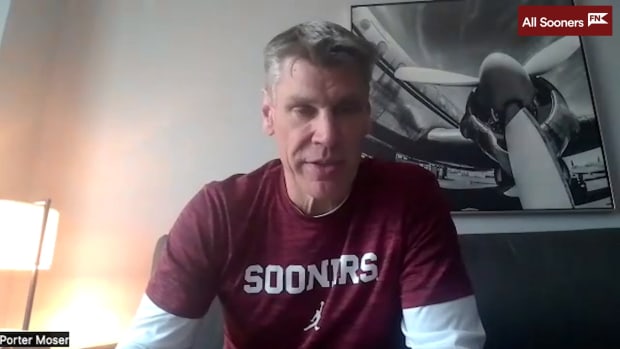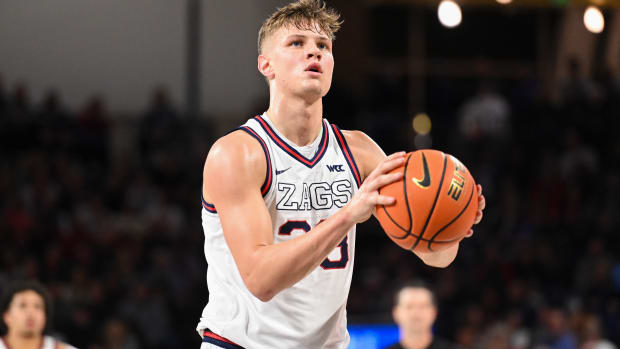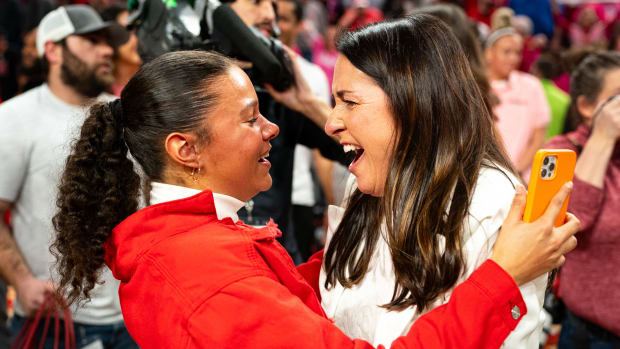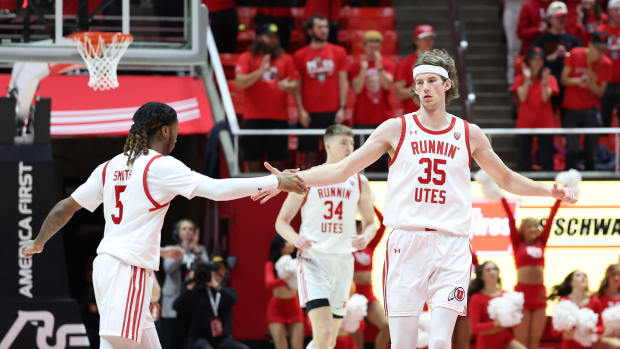
Despite an Overall Down Year, the Big Ten Can Do Damage in the NCAA Tournament
NEW YORK — The college basketball event staged here over the last week was, in a word, different. Lots of fans showed up, and there were a handful of compelling matchups between quality teams over the course of five days, but they felt out of place in an arena synonymous with another high-major conference’s March hoops. In a nod toward its expanded geographic footprint, the Big Ten moved its tournament from the Midwest to the East Coast for the second consecutive year. After playing in Washington D.C. in 2017 in its usual time slot, the days leading up to Selection Sunday, the Big Ten had to settle for descending on Madison Square Garden a week earlier, allowing the Big East to hold onto the dates it has owned for more than three decades. Two byproducts of the Big Ten’s switch were planting a pair of conference bouts in early December and compressing the conference schedule. Another: The league’s squads are staring at a seven-day wait from today until the field of 68 is unveiled on national television. No. 5 Big Ten seed Michigan has nothing to worry about when it comes to making the NCAA tournament. Nor does No. 3 seed Purdue, the team the Wolverines took down, 75–66, in the title game on Sunday.
The Big Ten tournament title went to Michigan again because it seems to be peaking at just the right time, because it has found a potent blend of shot-making and stop-getting to push a winning streak that began in mid-February to nine games heading into the NCAAs. No one will want to face these Wolverines, not when they’re scoring consistently from both sides of the three-point arc, playing the best defense of head coach John Beilein’s tenure and getting 14 points on 6-of-9 shooting off the bench from Jon Teske, a former three-star recruit and current sophomore big man who’d been averaging 3.3 points in 12.6 minutes per game and who’d scored four total points over the previous five games. With around six minutes left in the second half, Teske caught a pass from point guard Zavier Simpson just outside the restricted area, rose up and threw down a two-handed jam over Isaac Haas, drawing the Purdue mammoth center’s fourth foul, to push Michigan’s lead to 66–48. After completing the jam, Teske released his grip on the rim and bounded toward halfcourt wearing a glorious mean-mug, eager to chest-bump any teammate willing to celebrate an outcome that wasn’t yet official but might as well have been. “I really have no words to explain for it,” Teske said afterward. Soon, a Teske!Teske! chant reverberated around MSG, and if it hadn’t sunk in already, it surely did then: Michigan was going to leave New York having taken down the Big Ten’s two best teams in as many days. As a result, the Wolverines will enter the NCAAs as both a chic pick to outplay their seed by ripping off a deep run, and a nightmare draw for No. 1s eyeing a smooth path out of their regions.
• Get Your Michigan 2018 Big Ten Championship Gear Here
Michigan’s nine-point win over the Boilermakers, one day after running away from outright regular-season champion Michigan State in the semifinals on Saturday, made the Wolverines the Big Ten’s first repeat tournament champion since Ohio State in 2010–11. “Winning,” Michigan junior big man Moritz Wagner said after being named the tourney’s Most Valuable Player, “is so much fun.” Here are three takeaways from NYC, starting with a breakdown of why this Wolverines squad is unlike the ones Beilein has coached in the past.
A different Michigan team
These are not the Wolverines you’ve come to know. In the six seasons prior to this one, Michigan played better offense than defense, according to Ken Pomeroy’s adjusted efficiency ranking. Three times during that span, the Wolverines’ adjusted efficiency ranking on defense was at least 60 spots lower than its adjusted efficiency ranking on offense, including last season, when they finished fourth on offense and 69th on defense. In 2017–18, Michigan is bucking its performance norm under Beilein. It held Big Ten opponents to only 101.5 points per 100 possessions, its lowest figure since 2012 (100.5), and it currently ranks sixth in adjusted defensive efficiency, lower than any figure the Wolverines registered over a full season since Beilein left West Virginia to take over the Wolverines in 2007. The key to Michigan’s success on that end of the court is simple: It is forcing opponents to take bad shots. Teams have made 34.2% of their threes against the Wolverines, good for 129th in Division I, but squads generally exert little control over opponents’ long-range shooting percentage. What’s worth honing in on is Michigan’s ability to keep the number of opponents’ deep attempts in check. Teams have taken only 30.2% of their shots from beyond the arc against the Wolverines, which ranks ninth in the country, and 23.7% at the rim, which ranks sixth, according to Hoop Math. Given Michigan’s ability to take away looks close to the basket and from distance, it shouldn’t come as much of a surprise that 45.9% of opponents’ field goal attempts have been a variety frowned upon by Moreyball converts—two-point jumpers, the No. 1 mark in the nation, per Hoop Math. Also, opponents usually have a hard time getting extra shots against the Wolverines, as Michigan has allowed them to pull down 24.4% of their misses, a 5.6 percentage-point improvement from last season and the lowest percentage among Big Ten squads.
When asked about Michigan’s defensive improvement this season, senior wing Duncan Robinson pointed to one player’s influence on his team’s approach: 6-foot sophomore Simpson. “At least, in my time here, I feel like we’ve always been kinda criticized for not getting after it at that end,” Robinson said. “But this team has just completely transformed that mentality. To be honest with you, I think it starts with Zavier. He brings it every single game and every single day in practice and raises everybody’s level.” Added Purdue head coach Matt Painter of the Wolverines’ D after the title game on Sunday, “I think it’s personnel and attention to detail.” Painter also mentioned how Robinson was “a poor defensive player when he got there, but he’s really, really worked hard and he’s a much better defender now.” This won’t go down as one of Beilein’s best offensive outfits, but Michigan is dangerous when it’s stretching opposing defenses by knocking down threes. To wit: After getting tripped up at Northwestern in early February, Michigan connected on 42.4% of its 125 three-point attempts and rung up 1.19 points per possession—better than the Boilermakers’ Big Ten-high 1.17 during league play—while stringing together five consecutive wins to close out the regular season. Junior Moritz Wagner is one of the most lethal stretch big men in college basketball, having canned 41.7% of his 72 tries from behind the three-point line during league play, and Robinson, who is shooting 38.7% from long range in 2017–18 but hit 43.9% of 362 attempts the previous two seasons, has started heating up from downtown, with a 43.4% hit rate over his last 17 games. On Sunday, the Wolverines made only 8 of their 23 trifectas, but they roasted Purdue with dribble penetration, tallying 1.17 points per possession. The Boilermakers have allowed 0.97 on average this season.
Evaluating the Big Ten
Perhaps no high-major conference this season has been more disappointing than the Big Ten. Two of the league’s teams that were rated in the top 20 of the AP top 25 poll, Minnesota (15) and Northwestern (19), earned the No. 11 and No. 10 seeds, respectively, here last week after recording a combined 10 wins in league play, and there was only one non-league win between them (the Gophers, Providence on Nov. 13) over an opponent with a chance to hear its name called for an at-large pick on Selection Sunday that had access to at least five players for 40 minutes. Wisconsin didn’t show up in the polls last fall, but it’s nonetheless jarring to look up in March and come to grips with the fact that the Badgers have no shot of making the NCAAs after doing so the previous 19 years. They had been tied with Gonzaga for the fourth-longest active tourney streak in the country. Maryland—which Sports Illustrated projected in November as the No. 5 team in the Big Ten and a No. 7 seed in the NCAAs—didn’t come close to locking up a spot in the big bracket after making it the previous three seasons, and Iowa—which SI projected as a bubble squad and was picked to tie for fifth in the conference with the Terrapins in a media poll conducted in October— just wrapped up its worst season since winning only 11 games during Fran McCaffrey’s inaugural campaign in 2010–11, thanks in large part to a ghastly defense. A toxic brew of injuries, regression and non-conference slip-ups has put the Big Ten on track to have only four teams dancing: Michigan, Michigan State, Ohio State and Purdue. Assuming both Penn State and Nebraska find themselves on the wrong side of the cut line a week from now, that would be the lowest number since 2007–08, when, as an 11-team conference, the Big Ten also put four squads into the field. It sent seven squads in each of the three seasons before this one dating to the league’s increase to 14 teams in 2014–15.
Sean Miller's Statement Takes the Fight to ESPN: Is a Lawsuit the Next Step?
If there’s one saving grace for this version of the Big Ten, it’s its upper class. Michigan, Michigan State, Ohio State and Purdue have all built robust tourney résumés, which may well result in the conference earning more of John Gasaway’s seed points—under which a league is assigned four points for a No. 1 seed, three for a No. 2 seed, two for a No. 3 seed and one for a No. 4 seed—than in any season since the latest realignment additions. And as of Sunday, the Wolverines, Spartans and Boilermakers all checked in in the top 10 of Ken Pomeroy’s team ratings, tied with the ACC for the conference with the most teams in that span. Should a member of that Big Ten trio or Ohio State go on to win it all or even make the Final Four, it would put a positive gloss on a mostly dour season for a league that has under-delivered on preseason expectations. “It doesn’t get maybe the attention and everybody thinks the Big Ten’s down,” Wisconsin head coach Greg Gard said Friday after a three-point loss to Michigan State in the quarterfinals. “The people that are saying that are the people that aren’t playing in it, aren’t having to coach in it every night.” Added Nebraska head coach Tim Miles after his team was bounced by Michigan in the same round and likely eliminated from contention for the NCAAs, “I believe the Big Ten’s always a grind.”
Don’t rule out Purdue as a Final Four pick
You will not have a hard time coming up with reasons to doubt the Boilermakers. They looked hopeless trying to contain Michigan’s ball-screen offense on Sunday. They lost three consecutive games late in the regular season. They’ve beaten only one projected top-eight NCAA tournament seed since November, and that projected top-eight seed, the Wolverines, returned the favor in the conference championship tilt. Their nonconference strength of schedule ranks 149th in the country, according to Ken Pomeroy’s adjusted efficiency margin. They haven’t reached the Final Four since 1980, Matt Painter hasn’t led them past the Sweet 16 in his 12 prior seasons as head coach, and it was only two years ago that they were upended in the first round by No. 12 seed Little Rock. Purdue also watched its best player from a season ago, double-double automaton Caleb Swanigan, declare for the NBA draft last spring, and it has zero projected first-round picks in its rotation this season. If one or more of those things spook you into tabbing the Boilermakers for an early tourney exit, that’s understandable. Dig a little deeper, though, and it becomes clear that there are few teams better suited to get to San Antonio. “There’s always opportunities to improve,” Painter said after the loss on Sunday. “There’s always a silver lining.”
Drawing on data from the previous 15 years, former Sports Illustrated writer Luke Winn wrote last year about the composition of national championship winners. “For title teams,” he wrote, “the median profile is elite offensive efficiency, pretty elite defensive efficiency, a relatively low reliance on threes and strong interior D.” Enter 2018 Purdue, which has a top-end offense (third nationally in Ken Pomeroy’s adjusted efficiency) and a solid defense (30th in adjusted efficiency), launches from long-range in moderation (97th in three-point attempt rate) and guards effectively inside the three-point arc (15th in 2FG% defense). The statistical outlines of a team that could be cutting down the nets in a month is here, and there’s even more to like when you get into the Boilermakers’ personnel. Sophomore point guard Carsen Edwards has evolved from a nice sophomore leap story into one of the nation’s top backcourt players, full stop. Senior Vince Edwards is a skilled playmaking forward who offers lineup and matchup flexibility with his mobility and length (reported 7-foot wingspan). Senior guard Dakota Mathias is a deadeye perimeter shooter who entered Sunday as one of only seven qualifying players in the country this season to sink 47% or more of at least 5.5 tries from distance per game, according to Sports Reference. Senior Isaac Haas is a Transformer-sized big man (7’2,’’ 290 pounds) who reliably gets to the free throw line, scores on the low block and swats opponents’ shots.
“That’s a great team,” Penn State head coach Pat Chambers said of Purdue after his team and its top-25 kenpom defense yielded 1.22 points per possession—well above the 0.97 it has given up on average to this point of the season—in a 78–70 loss to the Boilermakers in the semifinals on Saturday. “They have so many weapons.” Purdue has size, experience, it scores effectively and it is hard to score on. Its five losses this season before Sunday came by an average of five points, and on a per-possession basis, it was the best team in the Big Ten during conference play. In a year in which no squad stands out as an obvious No. 1, think long and hard before dismissing the Boilermakers.


